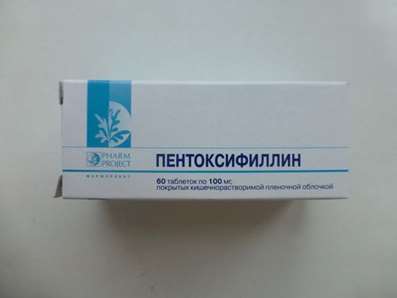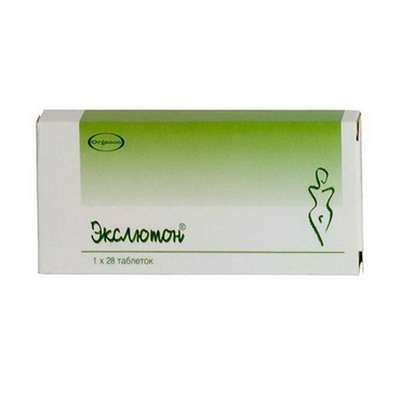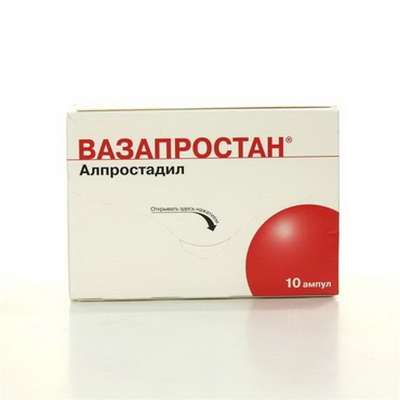Instruction for use: Dormicum
I want this, give me price
Dosage form: solution for intravenous and intramuscular administration
Active substance: Midazolam*
ATX
N05CD08 Midazolam
Pharmacological group:
Sleeping Pills
The nosological classification (ICD-10)
R45.1 Anxiety and agitation: Agitation; Anxiety; Explosive excitability; Internal stimulation; Excitability; Excitation; Excitation acute; Psychomotor agitation; Hyperexcitability; Motor excitement; Cessation of psychomotor agitation; Nervous excitement; Restlessness; Night trouble; Acute stage of schizophrenia with agitation; Acute mental agitation; Paroxysm of excitation; Overexcitation; Increased excitability; Increased nervous excitability; Increased emotional and cardiac excitability; Increased agitation; Mental arousal; Psychomotor agitation; Psychomotor agitation in psychoses; Psychomotor agitation of an epileptic nature; Psychomotor paroxysm; Psychomotor fit; Symptoms of Excitation; Symptoms of psychomotor agitation; The state of agitation; A state of anxiety; Excitation status; A state of heightened concern; The state of psychomotor agitation; Conditions of anxiety; Excitation conditions; The state of excitement in somatic diseases; Excitation level; Feelings of anxiety; Emotional arousal
Z100.0 * Anesthesiology and premedication: Abdominal surgery; Adenomectomy; Amputation; Angioplasty of the coronary arteries; Carotid artery angioplasty; Antiseptic treatment of skin in wounds; Antiseptic treatment of hands; Appendectomy; Atheroctomy; Balloon coronary angioplasty; Vaginal hysterectomy; Venous bypass; Interventions on the vagina and cervix; Interventions on the bladder; Interference in the oral cavity; Reconstructive-reconstructive operations; Hand hygiene of medical personnel; Gynecological Surgery; Gynecological interventions; Gynecological operations; Hypovolemic shock during surgery; Disinfection of purulent wounds; Disinfection of the edges of wounds; Diagnostic Interventions; Diagnostic procedures; Diathermocoagulation of the cervix; Long-term surgeries; Replacement of fistulous catheters; Infection in orthopedic surgical interventions; Artificial heart valve; Kistectomy; Short-term outpatient surgery; Short-term operations; Short-term surgical procedures; Cryotyreotomy; Blood loss during surgical interventions; Bleeding during surgery and in the postoperative period; Kuldotsentez; Laser coagulation; Laserocoagulation; Laser retinopathy of the retina; Laparoscopy; Laparoscopy in gynecology; Likvornaya fistula; Small gynecological operations; Small surgical interventions; Mastectomy and subsequent plastic surgery; Mediastinotomy; Microsurgical operations on the ear; Mukinging operations; Suturing; Minor surgery; Neurosurgical operation; Eclipse of the eyeball in ophthalmic surgery Orchiectomy; Pancreatectomy; Pericardectomy; The rehabilitation period after surgical operations; Reconvalence after surgical intervention; Percutaneous transluminal coronary angioplasty; Pleural Thoracocentesis; Pneumonia postoperative and post traumatic; Preparing for surgical procedures; Preparing for a surgical operation; Preparation of the surgeon's arms before surgery; Preparation of the colon for surgical interventions; Postoperative aspiration pneumonia in neurosurgical and thoracic operations; Postoperative nausea; Postoperative hemorrhage; Postoperative granuloma; Postoperative shock; Early postoperative period; Myocardial revascularization; Resection of the apex of the tooth root; Resection of the stomach; Bowel resection; Resection of the uterus; Liver resection; Small bowel resection; Resection of a part of the stomach; Reocclusion of the operated vessel; Gluing of tissues during surgical interventions; Suture removal; Condition after eye surgery; Condition after surgery; Condition after surgery in the nasal cavity;Condition after gastrectomy; Condition after resection of the small intestine; Condition after tonsillectomy; Condition after removal of duodenum; Condition after phlebectomy; Vascular Surgery; Splenectomy; Sterilization of surgical instrument; Sterilization of surgical instruments; Sternotomy; Dental surgery; Dental intervention on periodontal tissues; Strumectomy; Tonsillectomy; Thoracic surgery; Total gastrectomy; Transdermal intravascular coronary angioplasty; Transurethral resection; Turbinectomy; Removal of a tooth; Cataract removal; Removing Cysts; Removal of tonsils; Removal of myoma; Removal of mobile milk teeth; Removal of polyps; Removal of a broken tooth; Removal of the uterus; Removal of seams; Urethrotomy; Fistula of the luminal ducts; Frontoetmoidohaimorotomy; Surgical infection; Surgical treatment of chronic ulcers of extremities; Surgery; Surgery in the anus; Surgery on the large intestine; Surgical practice; Surgical procedure; Surgical interventions; Surgical interventions on the digestive tract; Surgical interventions on the urinary tract;Surgical interventions on the urinary system; Surgical interventions on the genitourinary system; Surgical intervention on the heart; Surgical procedures; Surgical operations; Surgical operations on veins; Surgical intervention; Vascular; Cholecystectomy; Partial resection of the stomach; Extraperitoneal hysterectomy; Percutaneous transluminal coronary angioplasty; Percutaneous transluminal angioplasty; Coronary artery bypass grafting; Extirpation of the tooth; Extirpation of infant teeth; Extirpation of pulp; Extracorporeal circulation; Extraction of the tooth; Extraction of teeth; Extraction of cataracts; Electrocoagulation; Endourological interventions; Episiotomy; Ethmoidotomy; Complications after tooth extraction
Composition and release form
Solution for intravenous and intramuscular injection 1 ml
midazolam 5 mg
auxiliary substances: sodium chloride; hydrochloric acid; sodium hydroxide; water for injections
in ampoules of 1 or 3 ml; in a pack of cardboard 5, 10 or 25 (3 ml each) pcs.
Pharmachologic effect
Pharmacological action - anticonvulsant, anxiolytic, myorelaxing, sleeping pills.
Dosing and Administration
Midazolam - a strong sedative, requiring slow administration and individual selection of a dose.
The dose should be titrated to achieve the desired sedative effect, which corresponds to the clinical need, the physical condition and age of the patient, as well as the medication he receives.
In patients older than 60 years, weakened or chronic patients, the dose should be chosen carefully, taking into account the special factors inherent in each patient.
Intravenous sedation with preservation of consciousness
The dose of Dormikum is selected individually; the drug can not be injected quickly or in jet. The onset of sedation varies individually, depending on the patient's condition and dosing regimen (rate of administration, dose size). If necessary, the dose is selected individually. The effect occurs approximately 2 min after injection, the maximum - on average, after 2.4 min.
Adults
Dormicum should be administered iv in slowly, at a rate of approximately 1 mg per 30 seconds. For adult patients under 60 years of age, the initial dose is 2.5 mg for 5-10 minutes before the procedure. If necessary, subsequent doses of 1 mg are given. The average total doses range from 3.5 to 7.5 mg. Usually, a total dose of not more than 5 mg is sufficient.
Patients over 60 years old, weakened or chronic patients, the initial dose is reduced to about 1 mg and injected it 5-10 minutes before the procedure. If necessary, subsequent doses of 0.5-1 mg are administered. Since in these patients the maximum effect can not be achieved so quickly, subsequent doses must be titrated very slowly and cautiously. Usually there is enough of a total dose not exceeding 3.5 mg.
Children
IM the drug is administered in a dose of 0.1-0.15 mg / kg for 5-10 minutes before the procedure. Patients in a state of more pronounced excitation can be administered up to 0.5 mg / kg. Usually there is enough of a total dose not exceeding 10 mg.
IV the initial dose of Dormikum administered for 2-3 minutes, after which, before proceeding to the procedure or enter a second dose, you need to wait another 2-3 minutes to assess the sedation effect. If sedation needs to be strengthened, the dose continues to be gently titrated until the required degree of sedation is achieved. Breastfeeding and children under 5 years of age may require much higher doses than older children and adolescents.
Data on the administration of the drug to unintended children younger than 6 months are limited. These children are particularly prone to airway obstruction and hypoventilation, so it is extremely important to titrate the dose, increasing it in small "steps" to achieve a clinical effect, as well as carefully monitor patients.
The initial dose in children from 6 months to 5 years is 0.05-0.1 mg / kg. To achieve the desired effect, a total dose of up to 0.6 mg / kg may be required, but it should not exceed 6 mg.
The initial dose in children from 6 to 12 years is 0.025-0.05 mg / kg, the total dose - up to 0.4 mg / kg (but not more than 10 mg).
Doses for children from 12 to 16 years old are the same as for adults.
Anesthetic
Premedication
Premedication Dormikum shortly before the procedure has a sedative effect (the occurrence of drowsiness and elimination of emotional stress), and also causes pre-operative amnesia. Premedication is usually performed by injecting the drug deep into the muscle 20-60 minutes before the anesthesia.
Dormicum can be used in combination with anticholinergics.
Intramuscular injection
Adults: for the preoperative sedation and removal of memory for preoperative events, patients who are not in the high-risk group (ASA class I or II, age 60 years) are administered 0.07-0.1 mg / kg (about 5 mg).
Patients over 60 years of age, weakened or chronic: the dose is individually reduced. If the patient does not receive drugs at the same time, the recommended dose of midazolam is 0.025-0.05 mg / kg, the usual dose is 2-3 mg. Patients over the age of 70 years of age IM Dormikum should be administered cautiously, under continuous supervision, because of the possibility of too much sleepiness.
Children from 1 to 15 years: relatively higher doses (based on kg of body weight) than adults. Doses in the range of 0.08-0.2 mg / kg have proven to be effective and safe.
Introductory anesthesia (adults)
If Dormikum is administered for induction anesthesia before other anesthetics, the individual response of the patients varies greatly. The dose should be titrated to the desired effect in accordance with the age and clinical condition of the patient. If Dormikum is administered before other intravenous drugs for anesthesia, the initial doses of each of these drugs can be significantly reduced, sometimes up to 25% of the standard starting dose.
The desired level of anesthesia is achieved by titrating the dose. The induction dose of Dormikum is administered iv slowly, fractionally. Each repeated dose, not exceeding 5 mg, should be administered within 20-30 seconds, making intervals of 2 min between administrations.
Adults under the age of 60 years: a dose of 0.15-0.2 mg / kg is administered IV in 20-30 seconds, after which it should wait 2 minutes to assess the effect. For surgical senile patients not belonging to the high-risk group (ASA Classes I and II), an initial dose of 0.2 mg / kg is recommended. Some attenuated patients or patients with severe concomitant diseases may have a relatively small dose.
Adult patients younger than 60 years who have not received premedication: the dose may be higher, up to 0.3-0.35 mg / kg. It is administered iv in 20-30 seconds, after which it should wait 2 minutes to assess the effect. If necessary, to complete the induction, the drug is administered additionally at doses of about 25% of the initial. Alternatively, liquid inhalation anesthetics may be used to complete the induction. In refractory cases, the induction dose of Dormikum can reach 0.6 mg / kg, but the restoration of consciousness after such doses can be slowed down.
Patients over 60 years of age who do not receive premedication require less induction doses of Dormikum; the recommended initial dose is 0.3 mg / kg, for patients with severe concomitant pathology and a weakened sufficient induction dose is 0.2-0.25 mg / kg, sometimes only 0.15 mg / kg.
For introductory anesthesia in children, Dormikum is not recommended, since the experience of its use is limited.
Supportive anesthesia
Maintenance of the required level of deenergia can be achieved either by further fractional administration of small doses (0.03-0.1 mg / kg) or by continuous iv infusion at a dose of 0.03-0.1 mg / kg / h, usually in combination with analgesics. Doses and intervals between administrations depend on the individual reaction of the patient.
Patients over 60 years of age, weakened or chronic patients in order to maintain anesthesia require smaller doses.
Children receiving for the purpose of anesthesia (ataralgesia) ketamine, it is recommended to administer a dose of 0.15 to 0.20 mg / kg IM. A deep enough sleep is usually achieved in 2-3 minutes.
Intravenous sedation in intensive care
The desired sedative effect is achieved by a gradual selection of a dose followed by either continuous infusion or fractional fluid administration of the drug, depending on the clinical need, the patient's condition, age and concomitantly administered drugs.
Adults
IV the loading dose is injected slowly, slowly. Each repeated dose of 1-2.5 mg is administered for 20-30 seconds, observing the 2-minute intervals between the administrations.
The value of IV loading dose can fluctuate within 0,03-0,3 mg / kg, and usually a total dose of not more than 15 mg is sufficient.
Patients with hypovolemia, vasoconstriction or hypothermia exercise dose are reduced or not administered at all.
If Dormikum is used simultaneously with strong analgesics, the latter should be administered before it, so that the dose of Dormikum can be safely titrated at the height of sedation caused by the analgesic.
The maintenance dose may be 0.03-0.2 mg / (kg × h). Patients with hypovolemia, vasoconstriction or hypothermia maintain a dose that is reduced. If the condition of the patient allows, the degree of sedation should be regularly assessed.
Children
To achieve the desired clinical effect, the drug is administered IV in a dose of 0.05-0.2 mg / kg for at least 2-3 minutes (I / O can not be injected rapidly). After this, they switch to continuous IV infusion at a dose of 0.06-0.12 mg / kg (1-2 μg / kg / min). If necessary, to increase or maintain the desired effect, the infusion rate can be increased or decreased (usually by 25% of the initial or subsequent rate) or administered additional doses of Dormicum.
If Dormicum infusion is started in patients with hemodynamic disorders, the usual loading dose should be titrated with small "steps", monitoring hemodynamic indicators (hypotension). These patients have a propensity for respiratory depression when using Dormikum, they require careful monitoring of respiration rate and oxygen saturation.
Newborn (<32 weeks) Dormicum should be administered as a continuous IV infusion at an initial dose of 0.03 mg / kg / hr (0.5 μg / kg / min), and a newborn (> 32 weeks) at a dose of 0, 06 mg / kg / h (1 μg / kg / min). In / in the loading dose, newborns are not injected, instead, in the first few hours, infusion is performed somewhat faster to achieve therapeutic concentrations of the drug in the plasma. The rate of infusion should be frequently and carefully reviewed, especially in the first 24 hours, in order to administer the lowest effective dose and reduce the possibility of cumulation of the drug.
Special instructions for dosing
Dormicum solution in ampoules can be diluted with 0.9% sodium chloride solution, 5 and 10% glucose solution, 5% fructose solution, Ringer's solution and Hartman's solution in a ratio of 15 mg midazolam per 100-1000 ml infusion solution. These solutions remain physically and chemically stable for 24 hours at room temperature or 3 days at 5 ° C.
Do not dilute Dormikum with a 6% solution of Macrodex in glucose or mix it with alkaline solutions.
In addition, precipitation may occur, which dissolves when shaken at room temperature.
Storage conditions for Dormicum
In the dark place at a temperature of no higher than 30 ° C.
Keep out of the reach of children.
Shelf life of Dormicum
5 years.
Do not use after the expiry date printed on the package.

 Cart
Cart





